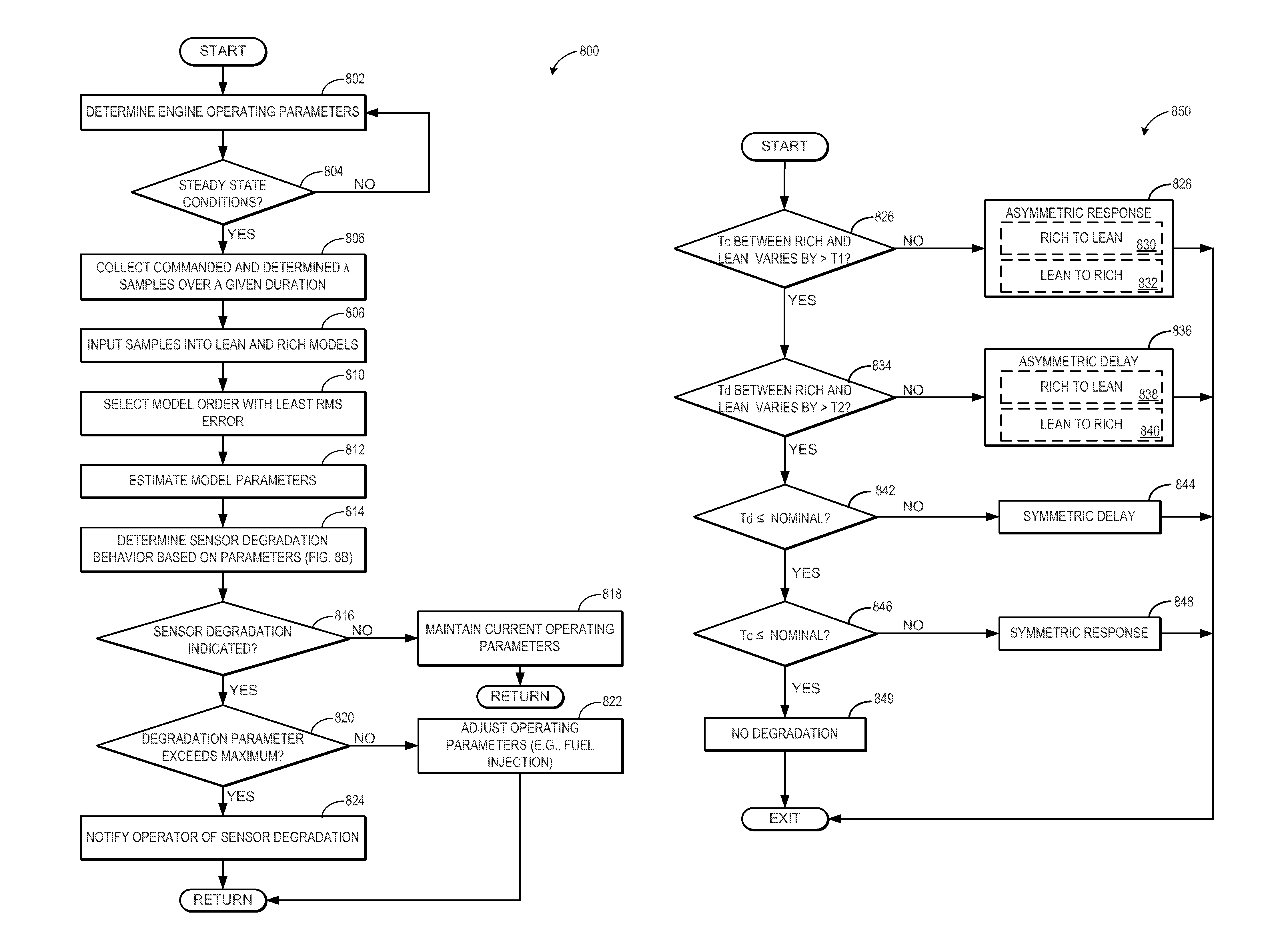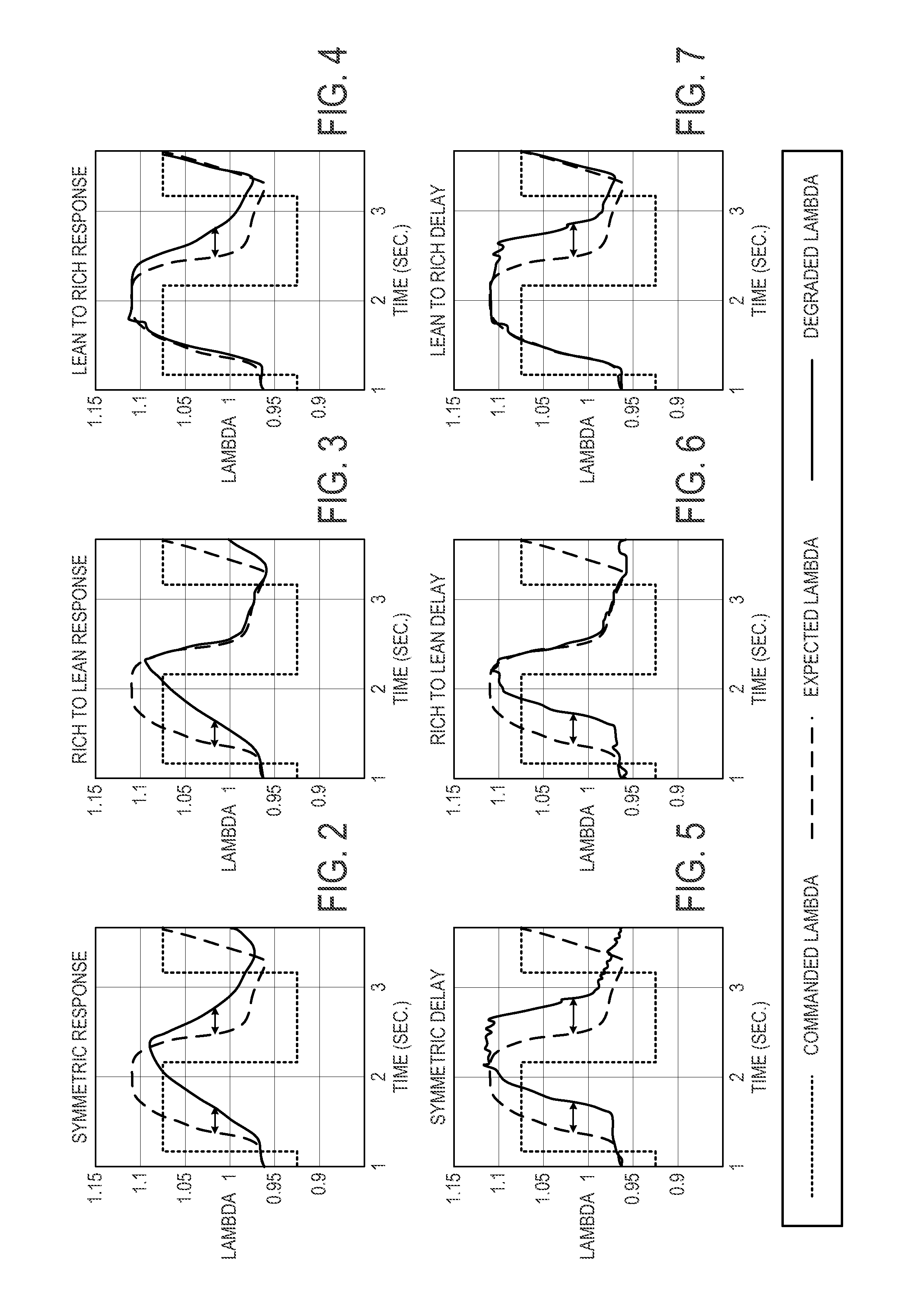Non-intrusive exhaust gas sensor monitoring
a technology of exhaust gas sensor and non-intrusive, applied in the direction of electrical control, instruments, nuclear elements, etc., can solve the problems of increased emissions and/or reduced vehicle drivability, reduced engine control based likelihood, and restricted excursions, so as to reduce vehicle drivability, increase emissions, and reduce the likelihood of engine control
- Summary
- Abstract
- Description
- Claims
- Application Information
AI Technical Summary
Benefits of technology
Problems solved by technology
Method used
Image
Examples
Embodiment Construction
[0018]The following description relates to an approach for determining degradation of an exhaust gas sensor. More particularly, the systems and methods described below may be implemented to determine exhaust gas sensor degradation based on recognition of any one of six discrete types of behavior associated with exhaust gas sensor degradation. In one example, model parameters from a rich combustion model and a lean combustion model may be compared to determine sensor degradation. The model parameters may include a time constant, time delay, and static gain of the model. For each of the lean and rich models, the delay order that best fits the data may be selected, and the other model parameters that correspond to the selected delay order may be estimated. For example, during steady state operating conditions, a set of commanded lambda values and measured lambda values may collected and input into the lean and rich models. A least squares algorithm may be applied to the data for the mo...
PUM
 Login to View More
Login to View More Abstract
Description
Claims
Application Information
 Login to View More
Login to View More - R&D
- Intellectual Property
- Life Sciences
- Materials
- Tech Scout
- Unparalleled Data Quality
- Higher Quality Content
- 60% Fewer Hallucinations
Browse by: Latest US Patents, China's latest patents, Technical Efficacy Thesaurus, Application Domain, Technology Topic, Popular Technical Reports.
© 2025 PatSnap. All rights reserved.Legal|Privacy policy|Modern Slavery Act Transparency Statement|Sitemap|About US| Contact US: help@patsnap.com



